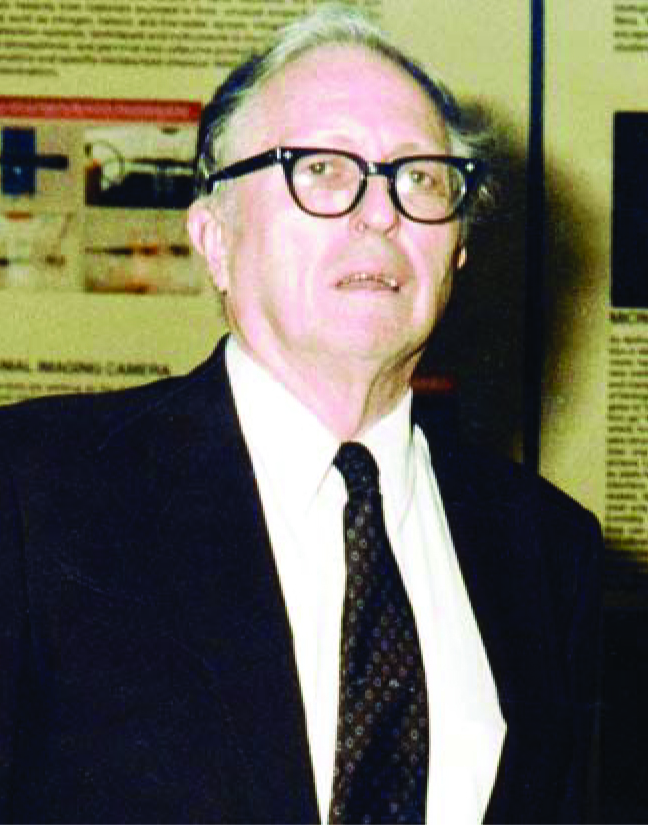Bruce John Faraday
DOI: 10.1063/1.2138435
Bruce John Faraday, a solid-state physicist and longtime employee of the Naval Research Laboratory (NRL), died of a heart attack at his home in Annandale, Virginia, on 5 April 2005.
Bruce was born in New York City on 9 December 1919 and was a 1940 magna cum laude physics graduate of Fordham University in New York. He went to NRL in 1948 after serving in the US Army in World War II. In 1963, while employed in NRL’s solid-state physics division, he received his PhD in physics from the Catholic University of America. His thesis, prepared under the guidance of W. Dale Compton, was titled “Color Centers in KCl and KBr by Prolonged X-Radiation at Low Temperatures.”
Bruce’s thesis work evolved into a career studying radiation’s effects on materials. The early 1960s marked the beginning of the US Navy’s interest in the effects of radiation on satellite components, and Bruce became an active researcher in solar cells and was well known at the photovoltaic specialists’ conference of the Institute of Electrical and Electronics Engineers. He also was very involved in the more fundamental International Conference on Defects and Radiation Effects in Semiconductors sponsored by the IEEE. That work expanded to include radiation damage to other semiconductor devices, including the phenomenon of single-event upset. From 1974 to 1984, Bruce headed NRL’s radiation effects branch.
Bruce’s managerial skills at NRL were legendary; he relied on a personal touch. For example, he would spend many a day on the phone with navy sponsors, talking mostly about sports (he was passionate about the New York Giants baseball and football teams) and occasionally about new navy programs he had developed. The approach worked; Bruce and his staff enjoyed many years attacking and solving critical technical problems for the navy.
In 1981 Bruce’s contacts at Naval Sea Systems Command (NAVSEA) and Naval Air Systems Command (NAVAIR) steered him toward a new hot area of materials research: radar-absorbing materials. Bruce was familiar with NRL’s ferrite materials expertise, saw the possibility of radar absorption in the ferrites, and started a program called Project Newboy. Newboy rapidly evolved into the low observables materials and structures group, which Bruce headed until his retirement in 1986. He received the Navy Superior Civilian Service Award in 1981 for that project, and the program remains an important research area at NRL.
Bruce’s leadership and guidance profoundly influenced many people at NRL. He nurtured his staff, got them interested in the work, and then gave them all the credit. We at NRL still point to Bruce’s techniques as the way to manage scientific personnel and develop research programs. More important, he was a great friend to many of us and will remain in our memories always.


More about the Authors
Carmine Carosella. 1 Naval Research Laboratory, Washington, DC, US .
Graham Hubler. 1 Naval Research Laboratory, Washington, DC, US .




